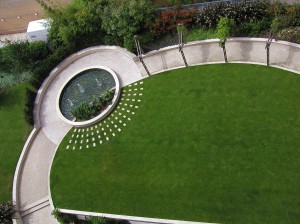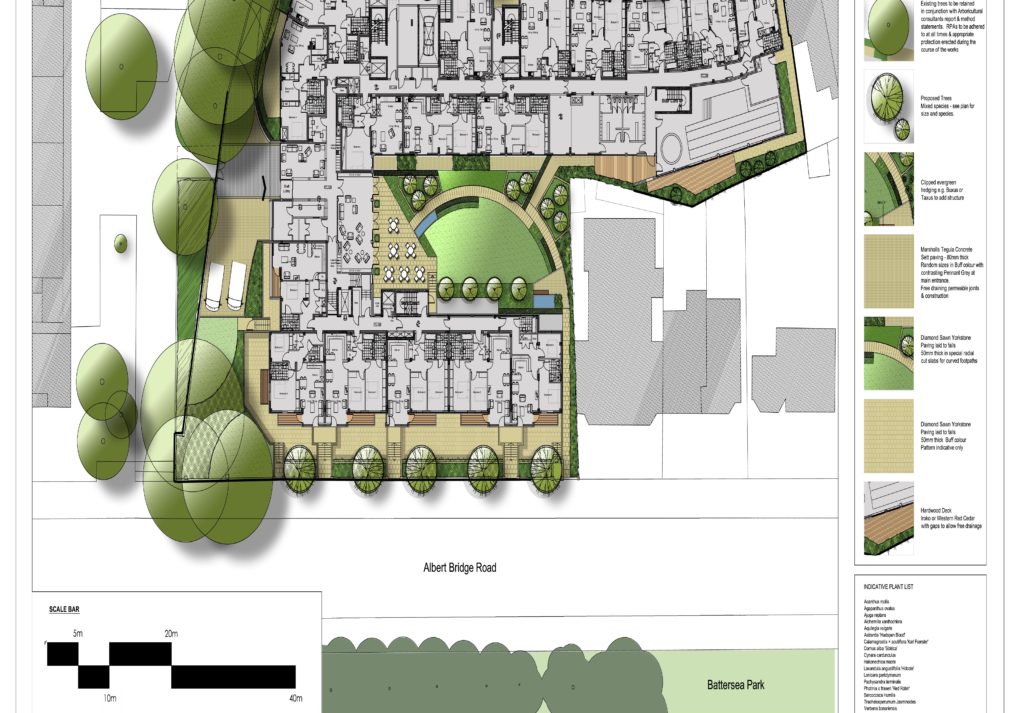The development market has a reputation for being cut throat and being populated by swaggering macho developers who only care about the bottom line. Is it really as bad as that? In the thirty years or so that I have been involved in this market, that hasn’t entirely been my experience. Sure, it has it’s share of predators like any other market. But despite that, I have found most developers to be personable and intelligent.
The stakes are high though – these are often for properties valued in the high millions. Because of this, sites are densely developed, which in turn leads to all sorts of technical and logistical problems. So this is not a market for the timid, but there is plenty of opportunity.

Typical developer? Not in my experience…
The first step is to understand the client. What are developers about? Are they all greedy, short-sighted individuals who only care about the profit? Do they all have enormous egos? Will they always go for the cheapest option? Of course not. Instead they are (mostly) ordinary people trying to build something of value, although admittedly they are perhaps more comfortable with risk than most of us! My first rule of thumb is:
- Give them what they need rather than what they want. Most developers may not understand what is available –they may know more about property than you, but you know far more about landscape than them. They will probably base their expectations/ideas on what someone else did on their last project. This can be very frustrating, particularly if they act as though they know everything. However: this is your chance to shine and show how much better than the opposition you are. Go beyond their expectations – surprise them!

Pavilion, St Johns Wood. A scheme that met the client’s brief, but exceeded his expectations.
But to do this, you must have a least a basic understanding of how the development process works. Let’s look at some of the background. First, funding for development.
- Funding – how does it work? Most people have the idea that it is all a developer’s own money behind a project. In fact, it has always been the case that developers have sought the majority of funding from banks and other institutions. In the (good/bad?) old days, it used to be possible for developers to get funding for about 80% of a project. Often, this would be calculated on the basis of final value. Given that the market would be rising and that a developer might expect to make a margin approaching 20%, this would mean that he (for it is mostly men) could get all the costs funded by loans and pick up the profit at the end. And then came the credit crunch!

It’s all about the money?
These days, it is a lot tougher. A developer may have to find a much bigger chunk of the land purchase costs himself. After that, he is still likely to be looking at having to find about 45% or so out of his own pocket. This means that on most projects there are co-investors, which can make the client a somewhat multi-headed beast. The bank will also have monitors in place (generally surveyors) who look after the funder’s interests and make sure the project progresses smoothly and with minimal risk.

A typical scheme for planning with clear simple graphics and plenty of green on the plan or as much as the space between the buildings will allow!)
Funding is only part of the story though; planning also plays a critical role (as with any development).
- The role of planning. No project can progress without local authority planning consent. Although this may seem like a fraught process and just another headache, it is actually a significant business opportunity. Few schemes can expect to get a smooth path through planning without at least some landscape input, especially on sensitive sites. This means that a commitment to a comprehensive landscape scheme can be built in to the project plan from the beginning. It’s also your opportunity to dazzle the client with your design skills and understanding of the market! The first stage is generally before the application. Initial discussions with the planners (‘Pre-app’) will often include some landscape material. The main application will almost always include a landscape plan an other drawings. It is important to make proposals that are affordable here, but not driven solely by budget. You have leverage over the client here as he will want to get planning, but push him too far and you will not be popular. there will generally be other consultants involved in this process as well, often guided by a planning consultant. Once planning is achieved, the next hurdle is ‘discharge of conditions’. Normally when a scheme is granted planning consent, certain conditions are imposed, one of which is usually landscape. Before that section of the work can be started on site, the planning condition needs to be discharged with detailed drawings, samples etc. There is quite often a gap between consent and discharge, with the scheme having moved on in the meantime. The planners will be looking to make sure that there is no watering down of the proposals, but some deviation form the detail of the original is normally accepted.

The Lancasters – a good example of how we achieved quality in a difficult contractual situation. Stock was all pre-tagged, testing certificates required for all the fill materials and followed up by a rigorous site inspection programme.
Although the production and release of information is generally driven by the planning process, there will be other times when detailed information needs to be produced, mainly as a case of integrating the landscape design with other parts of the development. Perhaps the most important thing however, is how to ensure that your designs are translated correctly into a polished landscape. For a lot more detail on how we achieve this, best to read my blog post ‘How do you deliver quality in a project’ posted in March 2015. However – here is a potted guide:
- Control of process and quality. Clearly the most important tool to ensure quality is good documentation. The quality of the drawings and specifications are critical. They should be clear and concise, as detailed as they need to be – that is they should have enough information for someone to build the scheme without improvising, but not so much that they become snow-blind! Once you cede control of the decision-making to site staff, you cede control of the quality of your scheme. That is not to say you can’t draw on their experience and expertise, but make sure you define the things that are important. Poor drawings and spec are the biggest complaint from contractors. Planting material is often difficult to specify accurately to achieve really good quality. for this reason, we often persuade clients to spend a little extra and pre-tag key items. Nurseries will generally hold stock for a period between detailed design and installation. The client does not own this stock, so there are no contractual complications, but all the tenderers have to go to the same source. Beyond this, we also use a rigorous process of insisting on samples of materials and workmanship, testing certificates (especially for soils), certified sources and so forth. We are terrier like in this, because it sends a message about the level of quality we expect elsewhere and means that contractors do not try and take short cuts. Finally, make sure you have sufficient fees for inspection. The client will expect you to visit the site on a regular basis during the construction process – indeed you will need to for your own sake to ensure quality.
Which brings me on to the final point – pricing. You need to be realistic on this. bear in mind that stages may be widely spaced – it is not unusual to have a gap of 2-3 years between enquiry and completion on these sorts of projects, sometimes longer. Your fees will need to take account of this as well as the myriad meetings you will need to attend. But in any case, in this market it is much better to compete on the basis of quality, not price; so don’t be shy!
This was first delivered as a lecture at the Landscape Show in late September 2015.

